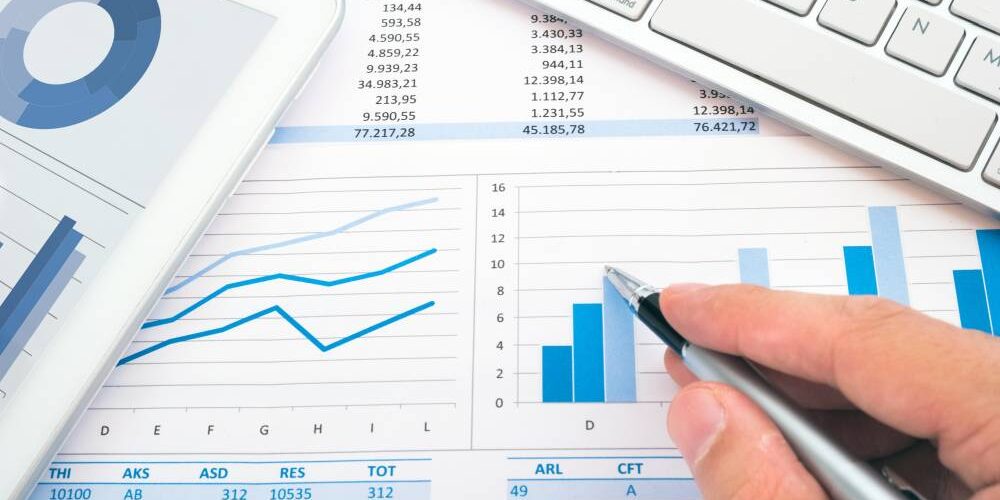
What is Full Cycle Accounting?
Accounting is the study of commercial operations through time. The whole accounting cycle refers to the process of performing all required activities during an accounting quarter. Within the greater purview of accounting, “whole cycle” accounting can also refer to activity cycles.
All types of bookkeepers should be aware of the eight-step accounting cycle. It divides a bookkeeper’s tasks into eight main steps. Accounting software and technology applications may typically automate many of these tasks. However, for small business accountants working on the books with limited technical support, learning and using the stages manually might be critical.
Keep in mind that this content is intended to be general in nature, and is not personal financial advice. You should always consult with an accountant, finance or registered tax specialist to ensure that you are getting the right advice.
Some of the key points we will be covering:
- There are business activities within the accounting function that have cycles, such as sales, payroll, and purchasing.
- You may decrease fraud and the potential for fraud by establishing a structure for your company’s expenditure cycle.
- Understanding the life cycle of a product is critical for a successful business.
- The way a corporation markets a product is influenced by its stage in the manufacturing process.
- For bookkeepers and busy entrepreneurs, the eight-step accounting cycle approach simplifies accounting.
The Accounting Cycle: What Is It?
The accounting cycle is a process consisting of eight steps for carrying out bookkeeping duties within a company. It provides a procedure that may be followed step by step in order to document, analyse, and report on the financial activity of a corporation.
During the entirety of a single reporting period, the accounting cycle is completed in its entirety. As a consequence of this, sustaining overall efficiency sometimes relies on one’s ability to maintain organisation throughout the course of the process’s timeframe. The requirements for reporting will determine how long the accounting cycle will take to complete. The majority of companies make it a goal to evaluate their performance on a monthly basis; nevertheless, some may place more importance on the outcomes obtained on a quarterly or annual basis.
Whatever the case may be, the majority of bookkeepers are aware of the current financial status of the company on a daily basis. In general, determining the duration of each accounting cycle is essential since it sets definite beginning and ending dates for the period being tracked.
When one cycle of accounting is complete, a new one starts, and the eight-step accounting procedure is performed again, starting from the very first step.
The accounting cycle is the comprehensive process of documenting and processing all of a company’s financial transactions. This process begins at the time that those transactions take place and continues all the way through their representation on financial statements. Finally, the accounting cycle concludes with the closing of those transactions.
The major responsibility of a book-keeper is to guarantee that accurate records are kept throughout the course of the accounting process, beginning with the very beginning and continuing all the way through to the very end. As long as the business remains in operation, the cycle will proceed to repeat itself once every twelve months of the fiscal year.
Each and every account, journal entry, T account, debit, and credit, in addition to adjusting entries, is taken into consideration during the course of a whole accounting cycle.
Understanding the 8-Step Accounting Cycle
The eight-step accounting cycle begins with the individual recording of each firm transaction and concludes with a complete report of the company’s actions throughout the cycle period. Accounting software is used by many businesses to automate the accounting process.
Accountants can programme cycle dates and receive automated reports this way.
More or less technical automation may be used depending on each company’s system. Although bookkeeping typically requires some technical assistance, a bookkeeper may be required to intervene in the accounting cycle at various times.
Every company’s business strategy and accounting procedures will necessitate certain modifications to the eight-step accounting cycle. The differences between accrual and cash accounting are frequently a primary source of worry.
Single-entry vs. double-entry accounting are two options available to businesses. All three key financial statements, the income statement, balance sheet, and cash flow statement, must be prepared using double-entry accounting.
A complete cycle accounting is a collection of accounting activities that are carried out by every company during the course of an entire year, in a manner that is both consistent and repeatable, or until the company ceases to exist, whichever comes first. This full cycle starts with the recording of all financial statements for the company and finishes with the closing account. In between, there are several steps along the way.
Full Cycle Accounting is also known as Accounting Cycle, or a regular business cycle in which a company’s business activities are measured consistently and within a set time frame. It also includes journal entries, transactions, debits and credits, as well as adjusting entries, to complete the eight-step cycle:

Journal Entries
Business transactions are recorded via journal entries. It can be entered into the general ledger and used to make financial statements for the company. Different sorts of journal entries include:
- Changing the entry
- Combination entry
- Entry in reverse
Ledger Accounts
A ledger account is used to keep track of all of a company’s transactions. It is a report that compiles all of the amounts that have been written into journals and connects those totals to one or more ledgers. A distinct entry in the general ledger that is connected to a particular asset, liability, equity, revenue, or expense
Examples of ledger accounts include cash accounts receivable, fixed assets, inventory, accounts payable, stockholders equity, revenue, cost of goods sold, depreciation, income tax expenditure, and accumulated costs.
Unadjusted Entries
For the purpose of conducting an analysis of account balances and making modifications, the unadjusted trial balance is utilised.
It is a list of account balances in the general ledger as of the end of the reporting period, before any adjusting entries have been made to bring the general ledger into balance and compile the financial statements. It can be used by managers and accountants to decide which accounts need to be altered or changed prior to the preparation of financial statements.
Adjusting Entries
These are the journal entries that are created at the end of the accounting cycle in order to update the revenue and expense accounts and make certain that they adhere to the matching notion that is inherent in full-cycle accounting. These entries are often completed in advance of the publication of a company’s financial statement. Changing entries will always need you to:
- Balance sheet account – accounts receivable, prepaid insurance, and interest payable
- Income statement account – Interest costs, insurance costs, and service income are all expenses.
Adjusted Trial Balance
After all of the adjusting entries have been prepared, this is a list of the closing balances for each and every account. It is a confidential document that lists the accounts in the general ledger and their respective balances after any adjustments have been made. In light of the fact that this is the very last step before the actual production of the financial statements, the objective here is to verify that the entries that we have made are accurate.
Financial Statements
The financial statements of an organisation are documents that detail the commercial activities and financial performance of the business. These statements are audited by governmental authorities, accountants, and auditors to ensure that the information presented is accurate and free from any instances of fraud. They are required to include:
- Balance Sheet
- Income Statement
- Statement of Cash Flows
Closing Entries
A closure entry is an entry that is made at the end of an accounting period to move funds from a temporary account to a permanent account. When a transaction is closed, the remaining money in the owner’s draw accounts is transferred to the capital account. The closing procedure consists of the following four fundamental steps:
- Closing Revenue Account
- Closing Expense Account
- Closing Dividend Account
- Closing Income Summary Account
Post Closing Trial Balance
This is produced once the concluding entries have been finished off completely.
As a result of the fact that all temporary accounts were closed during the phases that came before this one, the post-closing balance only contains actual accounts. During this phase, we make sure that all of the accounts are balanced and equalised.
At this point, the accounting cycle is finished, and for full-cycle accounting, a new cycle will start from the very beginning with step one.
It is important that this balance accurately reflect the closing of any temporary accounts.
Are you having trouble staying on top of your bookkeeping? We are standing by to lend a hand. Bookkept is a team of highly trained accountants and business advisers who can fulfil all of your requirements in terms of accounting and business consulting services. As a result, you will be free to focus on what you do best: operating your company.
Contact us today at (03) 8568 3606 or [email protected] for a consultation!
A list of all balance sheet accounts with non-zero balances at the end of a reporting period. It checks that the sum of all debit and credit balances equals zero.
Because these temporary accounts have already been closed and their balances moved to the retained profits account as part of the closing procedure, it has no income, gain, expense, or loss, or summary account balances.
The full series of transactions linked with specific company operations, such as:
- Payroll: The payroll system or staff receives a time card or timesheet from employees. Supervisors make the appropriate revisions and approve payment once they have been evaluated for accuracy. For net pay, the payroll is aggregated for gross pay, which includes all taxes and other deductions. Employees receive money in the form of a check or direct deposit at that point. These activities cover the entire cycle of activities for paid employees.
- Sales: A company buys things, keeps them, handles customer orders, selects items from stock, sells them on credit, and finally collects payment from customers. This is the entire process of selling products and services to clients.
- Purchasing: The whole cycle of accounts payable actions takes place here. The purchasing department issues a purchase order after an employee files a purchase requisition for products or services. The goods are then delivered to the receiving department, and the accounts payable staff handles the payment to the supplier. This cycle depicts the entire process of obtaining goods and services for the company.
Full Cycle Accounting Positions
There are business activities within the accounting function that have cycles, such as sales, payroll, and purchasing.
The purchasing function, for example, necessitates making a purchase request, sending a purchase order, receiving the products, and processing the incoming payment.
Accounting jobs are sometimes labelled as “full cycle” when organisations write job descriptions. This means that the employee is in charge of every phase of the accounting cycle.
A full-cycle accounts payable clerk, for example, would be in charge of each step of the purchasing cycle, while a full-cycle payroll clerk would be in charge of each step of the payroll cycle.
What Is a Revenue Cycle

Professional Services: Revenue cycles differ for companies or individuals that supply services rather than goods, such as law or accountancy firms. Clients are frequently required to pay a retainer, which is stored in a separate account by these types of experts. Money is taken from that account when the firm performs services. Attorneys may have a different form of contract in which they take on a client with the understanding that they will be paid out of any settlement obtained in the litigation.
Manufacturing Companies: When a manufacturing company completes the production of the goods it plans to sell, the revenue cycle begins. The next step is to process the order and prepare the inventory for shipment. Some manufacturers have sales teams that handle this aspect of the process, or they have regular dealers that receive goods from them. The company sends the customer an invoice when the products are delivered. The revenue cycle of the organisation ends when the customer pays the invoice.
Health Care Companies: Revenue cycles in health care are the most intricate. As most customers are aware, health-care prices are quite high, and patients must rely on private insurance or government-sponsored insurance to cover the majority of their expenses. These insurance businesses function as intermediaries, delaying and complicating the revenue cycle. Health-care providers who accept insurance must follow the insurance company’s billing processes and translate the treatments they conducted into a uniform code. In many cases, the insurance does not pay the entire cost of the treatments, which means the health care provider will have to bill the patient to recover the entire cost. When you receive money from both the patient and the insurance company, the revenue cycle is complete.
Software Development: Revenue cycles in software development are frequently contingent on reaching specified milestones. During each stage of the development process, some aspects of the project are delivered to the client, and the client pays the company to fund the next stage. When the entire project is delivered and the client receives the final payment, the revenue cycle is complete.
What Is the Expenditure Cycle in Accounting?
The expenditure cycle is another major accounting cycle. While the revenue cycle traces an item’s route from delivery to sale, the expenditure cycle focuses on a company’s spending decisions.
Companies buy goods and services in order to run efficiently and achieve their goals. Purchasing is an internal function with numerous objectives, including cost reduction and quality assurance. The purchasing process used by a corporation is governed by the expenditure cycle.
The repetitive process of first generating purchase orders and acquiring goods and services, then receiving these items, approving invoices, and lastly paying invoices is referred to as an expenditure cycle. The purchase of office supplies, which is something that almost all businesses require, is a nice example of the expenditure cycle at work.
When purchase orders are made based on employee needs, the expenditure cycle for office supplies begins.
The items are then ordered from an office supply store over the phone or online. A buy order is used to place the order. Accounting will approve the invoice for payment and draft a check to the supplier after the products have been delivered.
Importance of Expenditure Cycles
No matter how small your firm is, creating a plan for your expenditure cycles is a good idea.
Many small-business owners fail to create a system for accurately tracking purchases. A firm owner or management must personally authorise every purchase, invoice, and vendor without a clearly defined expenditure cycle.
Alternatively, if you simply allow employees to do what they want when they want, your company’s costs could skyrocket. When there is no system in place to track purchases, duplicate and wasteful purchases might become widespread.
You may decrease fraud and the potential for fraud by establishing a structure for your company’s expenditure cycle.
Putting a system in place has been demonstrated to dramatically lower the risk of embezzlement. If your system requires suppliers to be pre-authorized or approved before ordering, employees cannot “pay” phoney or fraudulent vendors.
Employees can’t write fraudulent checks if you manage payments. A written expenditure cycle can significantly improve the accounting and financial architecture of your firm.
What Is a Production Cycle?
Another important cycle in business is the production cycle. The production cycle, often known as the product life cycle, explains the time it takes for an item to be produced, brought to market, and eventually removed from it.
The manufacturing cycle has four stages: introduction, growth, maturity, and decline.
While accountants value revenue and expenditure cycles, the marketing department benefits more from the manufacturing cycle. It assists your company’s marketing staff in determining when it is appropriate to advertise, lower prices, expand into new markets, or develop new packaging.
The manufacturing process follows a very predictable pattern. A product proposal is first presented, after which it is forwarded to research and development to determine its viability and potential profitability.
The product is then manufactured, promoted, and distributed.
This is referred to as the product’s growth phase. If the new product is a success, production will be ramped up until it is widely available and mature. This is referred to as the product’s mature phase.

The product’s demand will eventually dwindle, and it will most likely become obsolete, leading to the decline stage. Understanding the life cycle of a product is critical for a successful business.
When a product is first introduced to the market, it may face minimal or no competition. If it succeeds, competitors may begin to follow in its footsteps. The more popular a product becomes, the more competition it will encounter. This may cause the product to lose market share, resulting in its eventual demise.
The way a corporation markets a product is influenced by its stage in the manufacturing process. Consumers, for example, must be informed about a brand-new product. A product that is further along in its life cycle will need to stand out from the crowd.
What Is a Full Cycle Payroll?
The payroll cycle, often known as full-cycle payroll, is the time between payrolls. Payroll time frames vary by business, and each must determine which payroll schedule is ideal for their firm and employees.
Within a single organisation, there are frequently multiple payroll periods.
Exempt or salaried employees, for example, may be paid once a month, whereas hourly workers may be paid weekly.
The payroll cycle begins with the determination of new employee wages and salaries.
Attendance and timekeeping are the following steps in the cycle. Some employees are required to clock in and out in order to maintain track of their working hours.
Others are paid a flat rate regardless of how many hours they work. Payment completes the payroll cycle, which is followed by the creation of governmental (tax) and internal reports.
Gathering employee time, calculating earnings and deductions, and printing a check are all steps in the payment cycle.
To summarise, they are the processes that every organisation takes every financial year.
Full Cycle Accounting necessitates a regular recording of financial transactions that leads to the preparation of financial statements, which aids businesses in recording and monitoring their financial health.
For bookkeepers and busy entrepreneurs, the eight-step accounting cycle approach simplifies accounting. It can assist in removing the guesswork from accounting procedures. It also makes financial performance analysis more consistent, accurate, and efficient.
Summary
Accounting is the study of commercial operations through time.
The whole accounting cycle refers to the process of performing all required activities during an accounting quarter. It gives a step-by-step method for documenting, analysing, and reporting a company’s financial activity. The eight-step accounting cycle begins with the recording of each firm transaction. It concludes with a complete report of the company’s actions throughout the cycle period.
Accounting software is utilised by a large number of companies to facilitate the automation of the accounting process. Depending on the system that each organisation uses, there may be more or less use of technical automation. For the purpose of conducting an analysis of account balances and making modifications, the unadjusted trial balance is utilised.
It is a list of the balances of all of the accounts in the general ledger as of the last day of the reporting period. It is utilised by managers in order to ascertain whether accounts require revisions or adjustments prior to the preparation of financial statements.
When companies develop job descriptions, accounting jobs are commonly referred to as “full cycle” jobs.
This indicates that the worker is responsible for each and every step of the accounting process throughout its whole. These actions encompass the entirety of the activity cycle for paid personnel and include things like sales and purchase as well as payroll.
When a manufacturing company completes the production of the goods it plans to sell, the revenue cycle begins. Some manufacturers have sales teams that handle this aspect of the process.
Health-care providers must follow the insurance companies’ billing processes and translate the treatments they conducted into a uniform code. Purchasing is an internal function with numerous objectives, including cost reduction and quality assurance.
The purchasing process used by a corporation is governed by the expenditure cycle. Many small-business owners fail to create a system for accurately tracking purchases. A written expenditure cycle can significantly improve the accounting and financial architecture of your firm.
The way a corporation markets a product is influenced by its stage in the manufacturing process. Consumers, for example, must be informed about a brand-new product. A product that is further along in its life cycle will need to stand out from the crowd.
Understanding the life cycle is critical for a successful business. The payroll cycle, often known as full-cycle payroll, is the time between payrolls.
Payroll time frames vary by business, and each must determine which payroll schedule is ideal for their firm and employees. For bookkeepers and busy entrepreneurs, the eight-step accounting cycle approach simplifies accounting.
